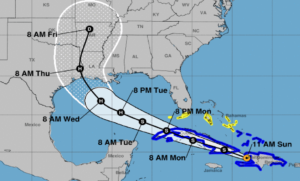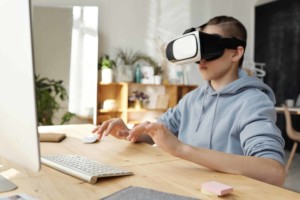Augmented Reality will improve field trips
eSchool News posted a update on Augmented Reality. Here’s a couple snippets:
This computer-enhanced view of the world is not just available to cyborgs in science-fiction movies. Increasingly, it can be found on cell phones, for free or on the cheap, through programs that provide “augmented reality.” These applications take advantage of the phones’ GPS and compass features and access to high-speed wireless networks to mash up super-local web content with the world that surrounds the user.
Developers and industry watchers are optimistic, though, that in the next few years we might see everything from augmented reality video games to museum guide services that recognize paintings and can pull up videos showing the artist at work, or information on the artist’s life and times.
One recent mobile simulation designed by Klopfer and his colleagues is TimeLab, which starts with a video showing the future of Cambridge, Mass. (home of MIT), which has been devastated by global warming. Players are sent back to the present day to travel around the MIT campus and collect information they can use to reduce climate change and its effects on the city.
Indeed, there are issues hindering today’s augmented reality applications. Cell phones need to be more powerful, with improved cameras and graphics capabilities and more accurate GPS.
Georgia Tech is hard at work producing AR applications. MIT has an Augmented Reality site that outlines educational applications in development:
The MIT Scheller Teacher Education Program has been creating “Augmented Reality” (AR) simulations to engage people in simulation games that combine real-world experiences with additional information supplied to them by handheld computers. AR simulations embed participants inside lifelike situations and help them understand the complex scientific and social dynamics underlying authentic problems in a variety of subject areas including the sciences (e.g., ecology, environmental science, geological sciences, forensics, and health sciences) as well as more diverse content areas including history, economics, local sociology, math and language arts.
AR applications have the potential to make field trips interesting. Students visiting a city block could each focus on a unique set of variables ranging from history, economics, demographics, and environmental health. A team of students could piece together a robust view of a location that without AR was just another city block.







0 Comments
Leave a Comment
Your email address will not be published. All fields are required.